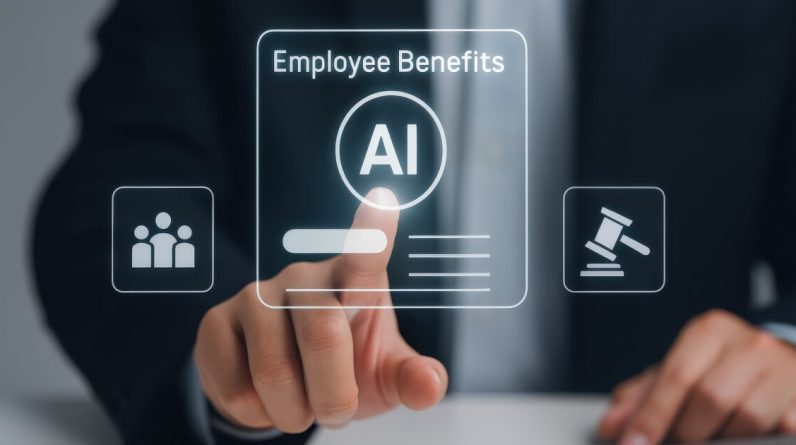
A 110-year-old check printing company is experimenting with AI that decides – autonomously – which steps to execute in customer financial workflows. That shift from following instructions to deciding which instructions to follow represents a fundamental change in enterprise automation.
At UiPath Fusion 25, Satish Balasubramanian, Divisional Chief Technology Officer for Architecture and Data at Deluxe, explained how his organization is navigating this transition from scripted processes to systems that make independent decisions.
The weight of legacy
Deluxe carries the kind of institutional history that would make most transformation consultants nervous. Founded in 1915 as a check printing company, the organization spent more than a century perfecting paper-based payment processes. Balasubramanian explains:
After 110 years, the company brings a lot of legacy processes. So we have tons of processes which have not been changed for many, many years.
Ten years ago, Deluxe made a strategic pivot to become a payments and data company, specializing in accounts payable, accounts receivable, and merchant services. This business transformation demanded an equally ambitious technology overhaul. The challenge was not simply modernizing systems – it was doing so while maintaining operational continuity across hundreds of processes that had accumulated over more than a century of operation.
The initial automation focus targeted what Balasubramanian describes as processes where “someone had to do something, move the file to the next table.” These manual, error-prone workflows were consuming resources that could be redirected toward building new digital platforms. Automation became the mechanism for what he characterizes as “decluttering” – systematically eliminating operational friction to create capacity for strategic initiatives.
The automation foundation
Deluxe’s first automation successes come through straightforward Robotic Process Automation (RPA) – software that mimics human actions to complete repetitive, rule-based tasks. Take rejected check orders, for example. Previously, when an order is declined due to payment issues or other reasons, employees manually navigate multiple screens to update systems and trigger downstream processes. Balasubramanian notes:
We just got a bot to do all of this. That way, a human is not clicking from one place to another, doing the same thing over and over again.
Balasubramanian explains the metrics that matter most:
The main thing was the time savings, the hours that we were able to give back to people to do something more efficient and revenue generating, rather than the mundane, repeated tasks we were doing.
Compliance requirements provide another example. Regulatory frameworks like the California Privacy Act require companies to locate and manage customer data across the entire technology estate – a significant challenge for an organization with 650 applications. What had been a manual, time-intensive process is now automated through bots, enabling Deluxe to “respond back to a request within the stipulated SLA, which was not happening before.” This shift from cost savings to cost avoidance indicates a more sophisticated understanding of automation value – preventing regulatory penalties and maintaining compliance, rather than reducing headcount.
The customer experience multiplier
While Deluxe’s automation initiatives are predominantly internal-facing, the downstream effects on customer experience are substantial. Balasubramanian cites the example of order status inquiries from small business customers. Previously, service representatives navigate multiple disconnected systems – legacy artifacts from various business acquisitions – to locate order information, a process that takes approximately five minutes per call. Automation consolidates and accelerates this data retrieval, reducing call times to under one minute,
Balasubramanian observes:
The customer might not see a direct benefit of the automation that we had done, but they would have definitely seen the improvement in the experience, in the service that we offered to them.
The four minutes saved per interaction translate directly into capacity for additional customer engagements or value-added selling opportunities during calls – a multiplication effect that simple return on investment calculations often miss.
This shows a broader pattern in operational automation that can be overlooked – improvements that do not announce themselves but fundamentally reshape service delivery capacity and quality.
The cognitive leap
The most revealing aspect of Deluxe’s automation evolution lies not in what the company has accomplished, but in how it is thinking about the next phase. The vision Balasubramanian describes involves “bringing the cognitive ability into the entire process,” enabling systems to make dynamic decisions about workflow progression based on what is actually happening.
Current prototyping efforts focus on customer-facing autonomous capabilities. Deluxe has deployed an experimental bot on its website that can answer product questions and provide order placement links. The planned evolution extends this to autonomous actions such as “placing an order, updating an order, canceling an order. Those are simple things that we could definitely make it using automation and AI.”
Beyond customer-facing applications, Deluxe envisions applying autonomous workflows to complex, human-intensive operational processes. Balasubramanian cites lockbox customer onboarding as a target use case. Lockbox services handle payment processing for business customers – collecting mail, scanning checks, matching payments to invoices, and updating accounting systems. Onboarding a new customer currently requires humans to make dozens of judgment calls – which document formats to expect, how to handle payment mismatches, when exceptions need escalation, how to integrate with the customer’s specific accounting platform. Each decision depends on context that changes case by case.
He explains the objective:
We’re aiming to cut down the human intervention, make some cognitive decisions, make some autonomous decision with human in the loop. That way I can move the steps much faster and really bring it to a human where needed to make a decision, or to validate if something is right or wrong.
Governance
Operating in financial services means governance is not an afterthought but the lens through which Deluxe evaluates every AI initiative. Balasubramanian stresses:
“As we move from automation into doing AI to do the workflow enablement, we definitely are doing everything under the trusted layer.”
Here he is referring to UiPath’s “trusted AI layer” – the vendor’s governance and security framework for AI-driven automation. For Deluxe, the difference is stark:
“Simple RPA was very easy. It’s just an automation,” he notes. “But autonomous workflows involve independent decision-making that affects customer accounts and financial transactions.”
The regulatory stakes rise accordingly. Balasubramanian says Deluxe is ensuring that customers trust them by making sure implementations are governed, secured, and privacy-compliant.
That governance-first mindset goes beyond checking regulatory boxes: in financial services, explainability, auditability, and control are prerequisites for doing business, not optional extras.
Evolution
Deluxe’s choice of UiPath three years ago is driven by practical considerations: low-code/no-code capabilities that enable rapid deployment across 200 identified automation use cases. But Balasubramanian points to the platform’s continued evolution as a significant factor. He explains: “The thing that amazes me is UiPath’s evolution, they are not still stuck in RPA – when gen AI came in, when the agency came in, they are evolving.”
This observation highlights a strategic consideration often overlooked in platform selection – trajectory over current state. Balasubramanian notes: “RPA gave you the initial return on investment, but there are bottlenecks that RPA doesn’t solve.” As organizations progress beyond basic automation, the question becomes whether the platform partner can evolve with them or whether new tools and integration layers will be necessary.
The stakes of this choice go beyond technical convenience. Each additional platform introduces integration complexity, governance challenges, and organizational change management overhead. A platform that can span from scripted RPA through intelligent document processing to autonomous orchestration keeps the architecture simpler and reduces these complications.
My take
Deluxe’s shift from check printing to autonomous workflows offers more than an automation success story – it’s an example of how established organizations can navigate major technological change without losing operational discipline.
The company started with low-risk, high-value RPA to build organizational confidence and technical capability before advancing to more complex applications. Then it evolved metrics – moving from simplistic headcount reduction to sophisticated measures of capacity creation, compliance assurance, and service quality improvement. Additionally, there’s the governance-first mindset – treating security, explainability, and control as foundational requirements rather than afterthoughts.
The shift Balasubramanian articulates – from “process stitching” to “cognitive ability” – represents the next big turning point in enterprise automation. Sequential workflows will always have a place for well-defined, stable processes. But significant opportunities increasingly lie in dynamic scenarios where context matters, exceptions are common, and rigid rules break down: loan originations, insurance claims processing, complex customer onboarding.
Organizations that successfully make this transition will likely share Deluxe’s characteristics: deep operational domain knowledge, willingness to experiment systematically, commitment to responsible deployment in regulated contexts, and selection of platform partners whose evolutionary trajectory aligns with their own ambitions.
The century that took Deluxe from check printing to payments technology established the operational foundation. The next decade will determine whether the company can embed autonomous decision-making into that foundation without sacrificing the trust and reliability that sustained it through the first hundred years.





